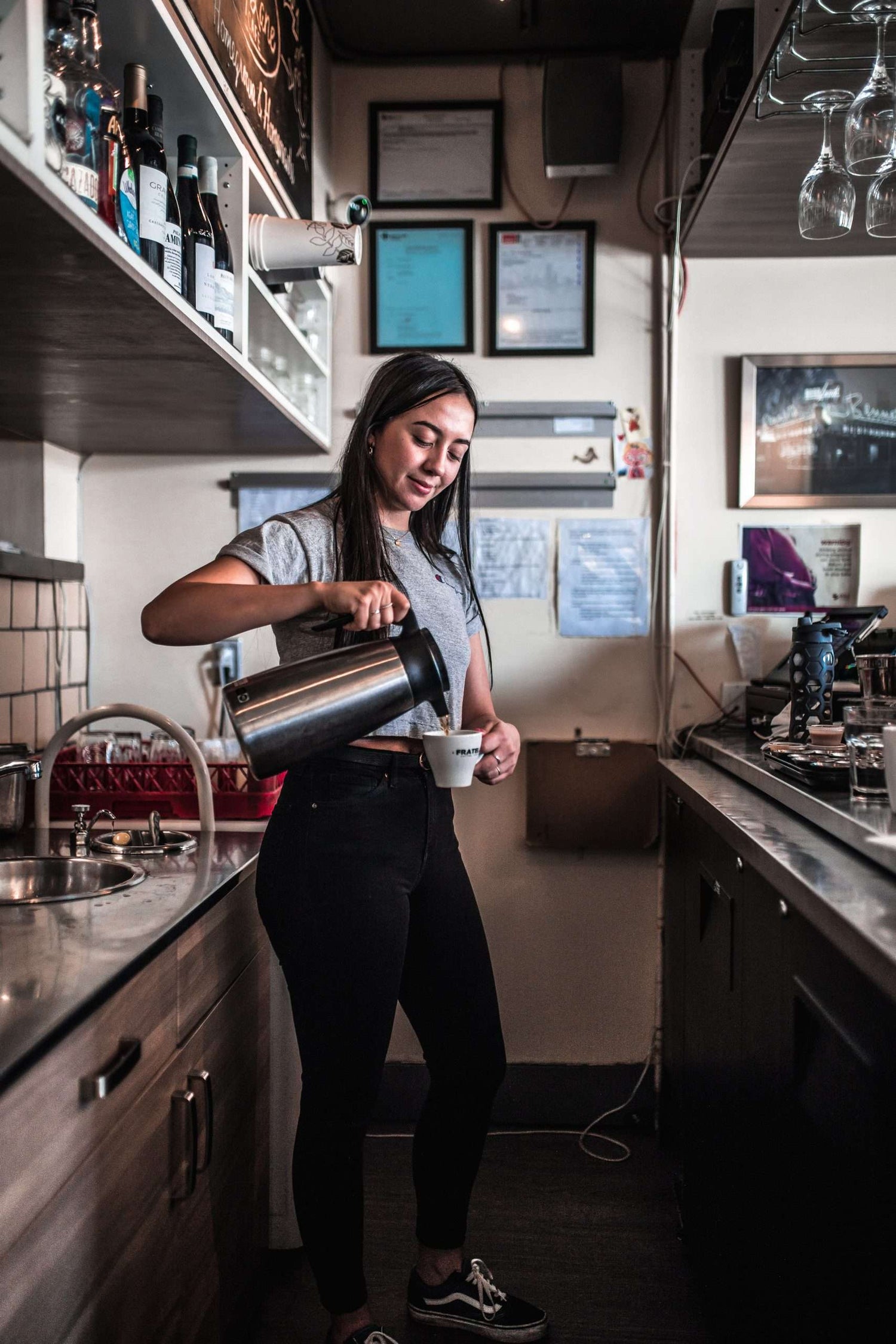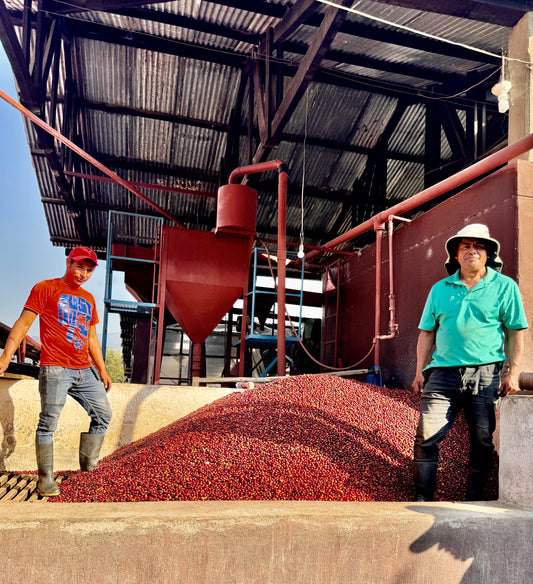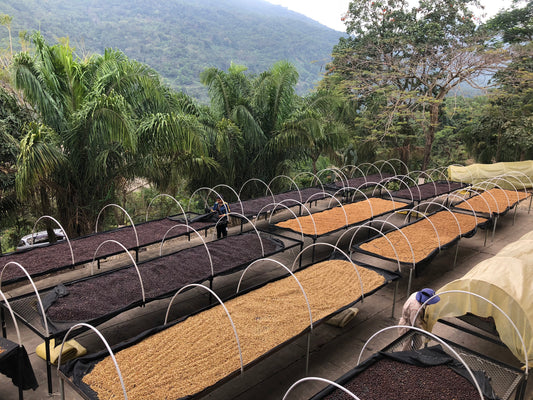A Guide to Calibrating Batch Brew Coffee

The art of making the perfect cup of coffee involves expertise and close attention to detail. In this blog post, is a guide to calibrating batch brew coffee, your brew ratio, solve typical flavour problems and explain the value of utilizing a TDS metre. The Specialty Coffee Association (SCA) suggests a starting brew ratio of 1:15 to 1:18; nevertheless, it’s vital to keep in mind that the ideal ratio can vary depending on the coffee and individual taste preferences.
There is a lot to ensuring a consistent and high-quality cup of coffee. Also find advice on cleaning and maintaining equipment, and using fresh and high-quality beans.

When utilizing a commercial batch coffee brewer, there are various procedures involved in calibrating the brew ratio. There are many brands available such as Fetco, Bunn, Bloomfield, etc…..each can be adjusted and calibrated utilizing their own systems and technology. These steps below may vary depending on the specific machine you are using, but a general process is similar, regardless of the machine you are using:
- Begin by measuring out a set amount of coffee grounds to use as your starting point. A common ratio is around 1 ounce (28 grams) of coffee for every 16 ounces (450 milliliters) of water.
- Turn on the machine and let it heat up to the appropriate brewing temperature.
- Grind your coffee beans and measure out the appropriate amount.
- Place the coffee grounds into the brew basket and start the brewing cycle.
- Once the brewing cycle is complete, measure the amount of coffee that has been brewed and measure the volume of coffee in your pot.
- Compare the two measurements to determine the brew ratio (coffee:water).
- Adjust the coffee dosage or water flow accordingly, until you achieve the desired brew ratio.
- Repeat the above steps for a few brews for consistent results.
- Once you achieve a good ratio, record the setting for future reference.
Note: If the commercial machine doesn’t have a built-in way of measuring the brew ratio, you’ll need to make use of a scale and a timer to measure the dose (coffee) and the yield (water) during the brewing process.

What would you suggest if the coffee tastes bitter?
If your coffee is tasting bitter, there are a few potential causes and solutions to try:
- Grind Size: The grind size of your coffee beans can affect the taste. If your grind is too fine, it can lead to over-extraction and a bitter taste. Consider using a coarser grind or adjusting the grind setting on your grinder. There are specific tools you can use to check grind consistency such as the Kruve grind size.
- Brewing Temperature: The temperature of the water used to brew your coffee can also affect the taste. Water that is too hot can extract bitter compounds from the coffee beans. Make sure your water is at the appropriate temperature, which is generally between 195 and 205 degrees Fahrenheit (90 and 96 degrees Celsius). In Calgary, we recommend 200°F.
- Brew Time: Over-extraction can also be caused by brew time that is too long. Try reducing the brew time to see if that improves the taste.
- Dose: The amount of coffee used in relation to the amount of water can also lead to a bitter taste if the coffee is over-dosed, check if you are using the appropriate dose of coffee for the amount of water you are using, refer to the brew ratio you’ve calibrated before.
- Coffee quality: The type of coffee and how it’s been stored can affect the taste. Old, stale beans can lead to a bitter taste. Make sure you are using fresh, high-quality coffee beans and storing them properly to maintain their freshness.
- Cleaning: A bitter taste can come from a build-up of old coffee oils and minerals in the machine, ensure to clean the machine and brewing equipment regularly, following the manufacturer’s instructions.
Try making these adjustments one at a time and tasting the coffee after each change to see which one makes the most difference. Consider conducting a blind taste test with a control group.

What would you suggest if the coffee tastes thin and weak?
If your coffee is tasting thin and weak, there are a few potential causes and solutions to try:
- Grind size: The grind size of your coffee beans can affect the taste. If your grind is too coarse, it can lead to under-extraction and a weak taste. Consider using a finer grind or adjusting the grind setting on your grinder.
- Dose: The amount of coffee used in relation to the amount of water can also lead to a weak taste if the coffee is under-dosed, check if you are using the appropriate dose of coffee for the amount of water you are using, refer to the brew ratio you’ve calibrated before.
- Brew time: Under-extraction can also be caused by brew time that is too short. Try increasing the brew time to see if that improves the taste.
- Water flow: The flow rate of the water through the coffee grounds may be too slow, which can lead to under-extraction. Check if the water flow is consistent and strong, and if not, try adjusting the water flow rate or the machine’s pressure.
- Water temperature: The temperature of the water used to brew your coffee can also affect the taste. Water that is too cool can extract fewer compounds from the coffee beans. Make sure your water is at the appropriate temperature, which is generally between 195 and 205 degrees Fahrenheit (90 and 96 degrees Celsius).
- Coffee Quality: The type of coffee and how it’s been stored can affect the taste. Old, stale beans can lead to a weak taste. Make sure you are using fresh, high-quality coffee beans and storing them properly to maintain their freshness.
- Cleaning: A weak taste can come from a buildup of old coffee oils and minerals in the machine, ensure to clean the machine and brewing equipment regularly following the manufacturer’s instructions.
Try making these adjustments one at a time and tasting the coffee after each change to see which one makes the most difference. Also, consider a blind taste test with a control group.

Many cafés these days are using a TDS meter & refractometer to calibrate their brewed coffee.
Here are some tips on using this device to confirm your brew ratios.
A TDS (total dissolved solids) meter is a device that measures the concentration of dissolved solids in a liquid, such as coffee. Many cafes use TDS meters to calibrate their brewed coffee to ensure consistency in taste and strength. Here are a few suggestions for approaching coffee using a TDS meter:
- Start by measuring the TDS of your coffee before brewing. This will give you a baseline reading to compare to later.
- Measure the TDS of your water before brewing. This will help you understand how the water you’re using is affecting the final TDS of your coffee.
- Grind your coffee beans and measure out the appropriate amount.
- Brew your coffee as you normally would, and measure the TDS of the final brew.
- Compare the initial TDS of your coffee to the final TDS of your brewed coffee. You want to aim for a TDS of around 1.2-1.5% to achieve a well-balanced coffee.
- If the TDS is too high, you may need to reduce the amount of coffee you are using or increase the amount of water. If the TDS is too low, you may need to increase the amount of coffee or decrease the amount of water.
- Adjust the coffee dose, brew time, and grind size accordingly, to achieve the desired TDS.
- Repeat this process for a few brews for consistent results.
- Once you achieve the desired TDS, record the setting for future reference.
- Keep in mind that TDS is not the only metric to evaluate a coffee, you should also evaluate the aroma, flavors, and acidity of the coffee to have a full understanding of the final product.
It’s important to note that TDS is a guide, not a rule, and the TDS that is ideal for one coffee may not be ideal for another. Additionally, personal preference will also play a role in determining the final TDS.




